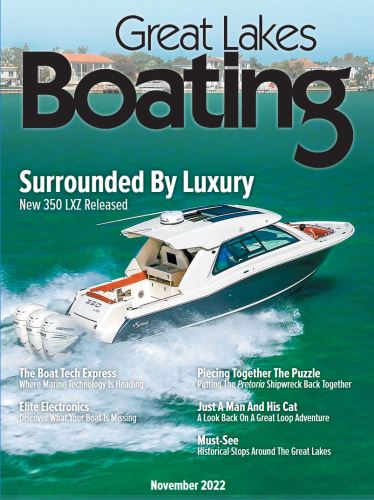 Boaters should take heed that various experts keep advising that while global navigation systems are commonplace -- "paper charts are still and always will be relevant." And many boatowners are agreeing that to help in avoiding on-water incidents, a balance between new and 'old' systems, and including physical observations, can be key even in this digital age.
Boaters should take heed that various experts keep advising that while global navigation systems are commonplace -- "paper charts are still and always will be relevant." And many boatowners are agreeing that to help in avoiding on-water incidents, a balance between new and 'old' systems, and including physical observations, can be key even in this digital age.
Readily available electronic navigation tools introduced many to navigation but often without the basic navigating skills to use them, with the inexperienced thinking these electronics were infallible. Ask the Coast Guard, Auxiliary and Power (& Sail) Squadron people.
Electronics aid navigation
Most higher quality recreational GPS manufacturers clearly note in the product information provided to buyers state their product should be considered an aid and that government charts along with official notices make for safer navigation.
Note the charts in your manufacturer provided electronic chart plotters, it is cautioned that even when the latest card is purchased with new chart updates, there is no guarantee of accuracy.Again, users are put on notice it is their responsibility "to use official government charts, notices to mariners, caution and proper navigational skill when operating this product."
Keeping track with paper charts
Again, when utilized with other methods the GPS becomes a powerful tool but veteran boaters regularly mark their progress on paper charts to confirm those readings with the GPS.After all, the marine environment can be unforgiving and elctronic devices can fail, and sometimes when needed the most. Who among us would disagree with that? Ever had an obstruction cause a signal to drop out?
Having a second GPS or running regular checks on the software, said one seller, doesn't necessarily equate to verifying a GPS fix. Expect the unpredictable.Think of the occasional problems with a vehicle GPS.
Nautical charts rely on accurate information
Nautical charts (and hydrographic surveys) we are informed by the National Oceanic and Atmospheric Administration officials "rely on accurate shoreline information and a precise geodectic infrastructure with elevation, tide and water level data -- shoreline surveys being critical to keeping nautical charts up to date." While focus switched from paper charts to the electronic format, some scales and irregular layouts were retained which "resulted in a product suite less than ideal for mariners' use in electronic systems. Often features compiled on adjacent charts did not match seamlessly even when the same scale.
To resolve what it calls 'discontinuity' issues, NOAA has undertaken in some regions a major rescheming effort, coupled with a plan to retire paper charts as we know them within the next five years as reschemed electronic nautical chart cells are phased in. (A January 2020 analysis reported 54% of Coastal, Ocean, and Great Lakes Waters are Unmapped.)
from NOAA Office of Coast Survey: Want to create your own chart from an improved user interface from latest electronic navigation chart data? See: nauticalcharts.noaa.gov/updates/explore-the-refreshed-enc-based-noaa-custom-tool
+ NOAA for printing charts: oceanservice.noaa.gov/facts/find-charts
Electronic charts - additional disadvantages
Back to paper charts and wisdom (and some sobering thoughts) from a highly experienced Electronic and Traditional Navigation Instructor. Charles Hawkswell says, "Electronic charts are terrific, if used correctly. If used incorrectly, they may well kill you. The same can be said for paper charts."
He continues, "However, paper charts have an inherent advantage, they do not use electricity nor are reliant on Governments to not turn off the GPS system. In addition there is no chance of an authorised paper chart being 'spoofed.' Yes, there have been numerous examples of GPS signals that have been electronically compromised."
Readers may want to check out the following Charles provided:
Protecting GPS From Spoofers is Critical to the Future of Navigation - IEEE Spectrum
spectrum.ieee.org
Why GPS Spoofing is a problem (and what to do about it) - NextNav
nextnav.com/newsroom & resources
Increase your and your vessel's safety by keeping track of your position by plotting on paper charts, along with being familiar with your GPS functions and updates whether in confined waterways, unmarked channels, or open water, or pretty much wherever you boat.You may be very glad you did.
Joan Wenner, J.D. is a longtime U.S. boating safety writer with a law degree, also published in Canada and the UK. Comments or questions are welcomed at joan_writer@yahoo.com

